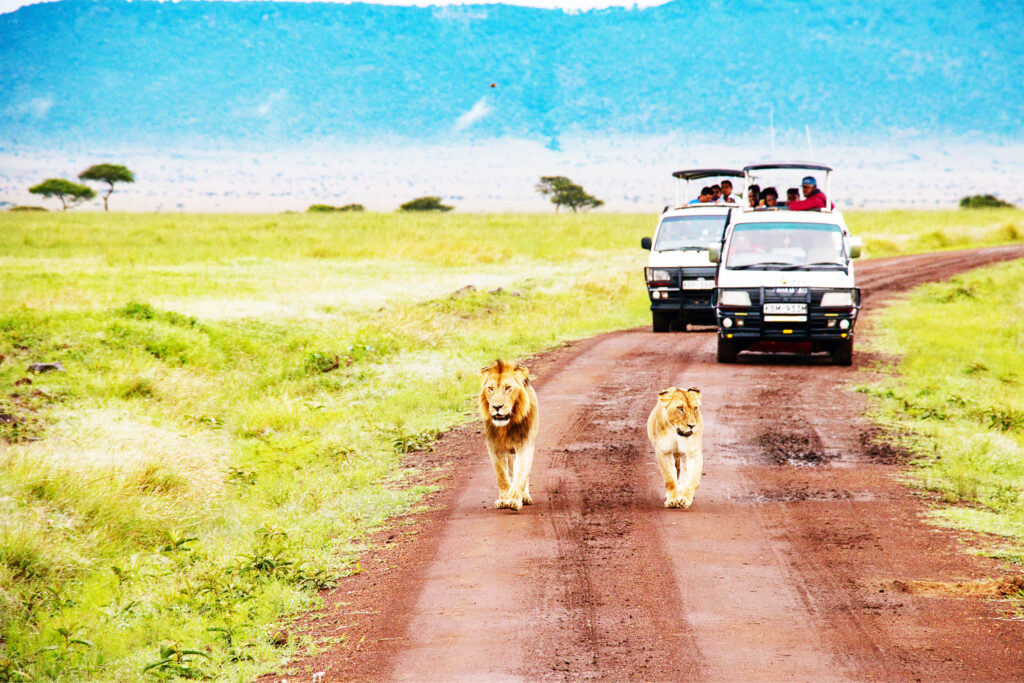Pack your khakis and binoculars, we’re going on a wild ride to Africa’s best safari destinations. Get ready to be wild-ly amazed

Going on a safari is one of the most thrilling and adventurous experiences one can have, and Africa offers some of the best safari destinations in the world–from the vast plains of the Serengeti in Tanzania to the unique ecosystem of the Okavango Delta in Botswana, Africa is home to a plethora of wildlife and landscapes that attract visitors from all over the globe.
In this story, we will explore eight great places to safari in Africa, and why they are awesome destinations for any wildlife enthusiast.
Here are eight great places to safari in Africa and why they are awesome:
- Serengeti National Park, Tanzania: Serengeti National Park is one of the most famous wildlife reserves in the world, known for its abundant wildlife and spectacular annual wildebeest migration. It’s home to the “Big Five” (lion, leopard, elephant, buffalo, and rhino) as well as a plethora of other animals, making it an ideal destination for any wildlife lover.
- Masai Mara National Reserve, Kenya: Masai Mara is one of the most popular safari destinations in Kenya, famous for its large herds of wildebeest and zebras. The reserve is also home to lions, cheetahs, leopards, and other predators, making it an excellent destination for spotting wildlife.
- Okavango Delta, Botswana: The Okavango Delta is a unique and beautiful ecosystem, featuring lagoons, islands, and waterways. It’s home to some of Africa’s most endangered species, including the African wild dog and the cheetah. The delta also offers excellent bird-watching opportunities.
- Kruger National Park, South Africa: Kruger National Park is one of Africa’s largest game reserves and is known for its high density of wildlife, including the Big Five. It’s a popular destination for self-drive safaris, allowing visitors to explore the park at their own pace.

- Etosha National Park, Namibia: Etosha National Park is a unique destination, featuring a large salt pan surrounded by grasslands and savannah. It’s home to a wide variety of wildlife, including elephants, lions, and rhinos, and offers excellent opportunities for game viewing.
- Ngorongoro Crater, Tanzania: Ngorongoro Crater is a UNESCO World Heritage Site and one of Africa’s most iconic landscapes. The crater is home to a vast array of wildlife, including the Big Five, and is one of the best places in Africa to see the endangered black rhino.
- South Luangwa National Park, Zambia: South Luangwa National Park is known for its incredible diversity of wildlife and excellent leopard sightings. The park is also home to over 400 species of birds, making it a top destination for birdwatchers.
- Chobe National Park, Botswana: Chobe National Park is located along the Chobe River and is known for its large herds of elephants. The park is also home to lions, leopards, and hyenas, and offers a range of safari experiences, from boat safaris to game drives.
Did you know?
Despite the popularity of African safaris, there are still many areas of the continent that remain unexplored and unknown to many visitors. For example, the Central African Republic, Congo, and Gabon are countries that offer unique and untouched safari experiences, with vast areas of rainforest and savannah waiting to be discovered.
These areas offer the chance to see rare and elusive species such as forest elephants, lowland gorillas, and pangolins, making them ideal for adventurous travelers seeking a more off-the-beaten-track safari experience.
A little history:
The term “safari” originated in the late 1800s, during the colonial period in Africa, when European explorers and hunters began to explore the continent’s interior in search of big game. The word “safari” comes from the Swahili language, meaning “journey” or “travel.”
 These early adventures were often led by local guides and involved long expeditions into the wilderness, often lasting several weeks or even months.
These early adventures were often led by local guides and involved long expeditions into the wilderness, often lasting several weeks or even months.
In the early 1900s, safaris became popular among wealthy travelers and became more commercialized. Various companies began to offer guided tours, often featuring luxury accommodations and amenities. The advent of air travel in the mid-1900s made safaris more accessible to travelers from around the world, and the industry continued to grow and evolve.
Safaris are an important source of tourism revenue for many African countries, and are a popular bucket-list destination for travelers seeking a unique and adventurous experience.
While the focus of modern safaris has shifted away from big-game hunting, the thrill of seeing African wildlife up close and personal remains a major draw for visitors from around the world.


